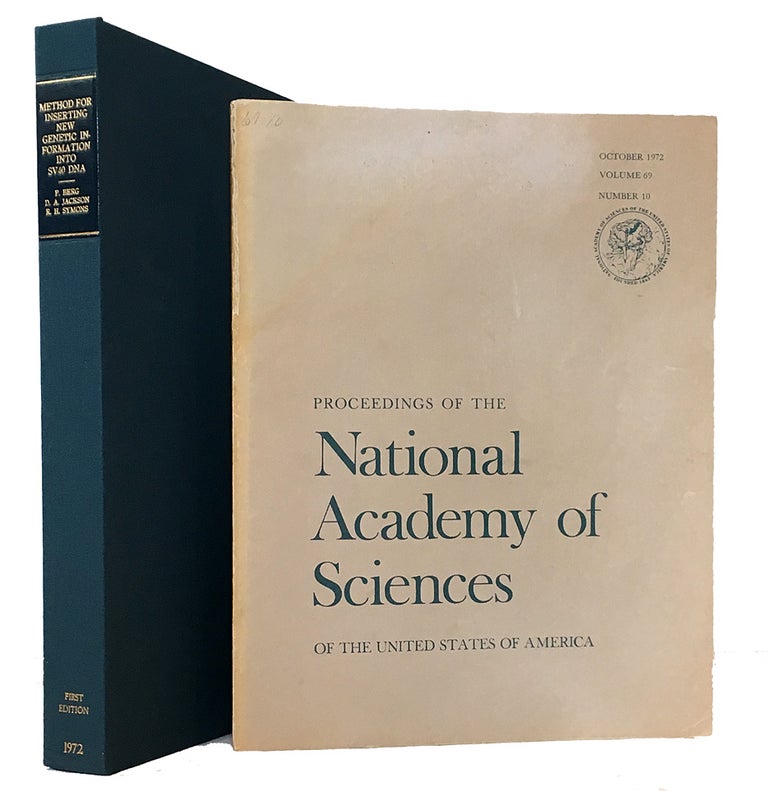Biochemical Method for Inserting New Genetic Information into DNA of Simian Virus 40
"The recombinant DNA breakthrough has provided us with a new and powerful approach to the questions that have intrigued and plagued man for centuries." -Paul Berg, Nobel Lecture
FIRST EDITION of the landmark paper marking the birth of recombinant DNA technology. Paul Berg was awarded half of the 1980 Nobel Prize in Chemistry "for his fundamental studies of the biochemistry of nucleic acids, with particular regard to recombinant-DNA."
"Technical advances have played an important role in the advance of genetic understanding. In 1970, American microbiologists Daniel Nathans and Hamilton Othanel Smith discovered a specialized class of enzymes (called restriction enzymes) that cut DNA at specific nucleotide target sequences. That discovery allowed American biochemist Paul Berg in 1972 to make the first artificial recombinant DNA molecule by isolating DNA molecules from different sources, cutting them, and joining them together in a test tube. These advances allowed individual genes to be cloned (amplified to a high copy number) by splicing them into self-replicating DNA molecules, such as plasmids (extragenomic circular DNA elements) or viruses, and inserting these into living bacterial cells. From these methodologies arose the field of recombinant DNA technology that presently dominates molecular genetics" (Britannica).
"The history of gene splicing, also called recombinant DNA or genetic engineering, is recent. It began with a paper by biochemist Paul Berg of Stanford University and his collaborators in 1972. In his goal to insert new genes into living cells, Berg was the first scientist to splice together segments of DNA from different organisms... Soon, Berg became aware that he had set into motion a new biology of unimaginable consequences. Eight years later, on the occasion of his Nobel address, he thanked his students and colleagues for sharing with him 'the elation and disappointment of venturing into the unknown'" (Lightman, The Discoveries).
In: Proceedings of the National Academy of Sciences, Vol 69, No. 10, October 1972., pp. 2904-2909. Washington, DC: National Academy of Sciences, 1972. Quarto, original wrappers; custom cloth box. Evidence of stamp removal at top of front wrapper, fading to spine and closed tear to upper joint; interior fine. Rare in original wrappers.
Price: $2,300 .


